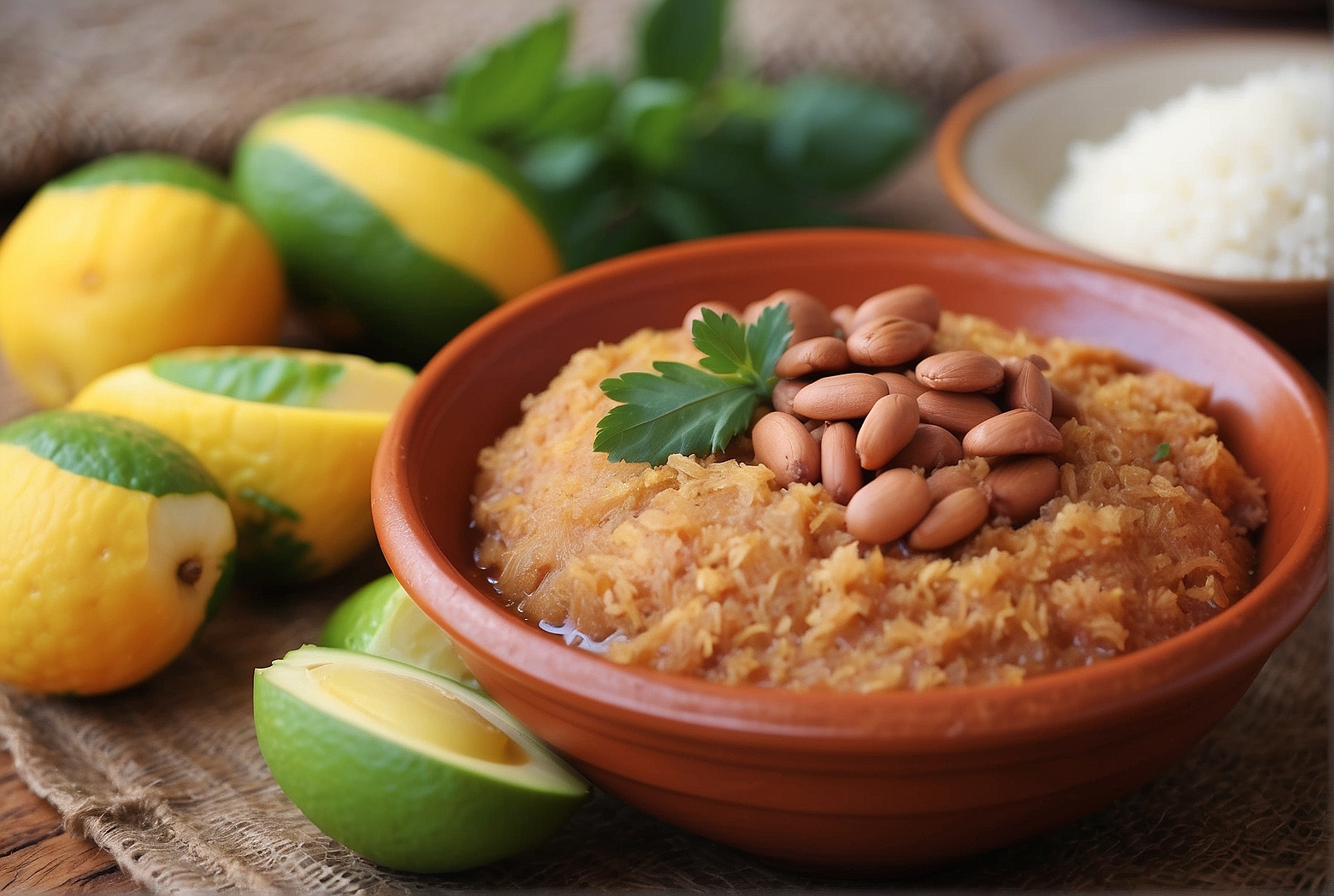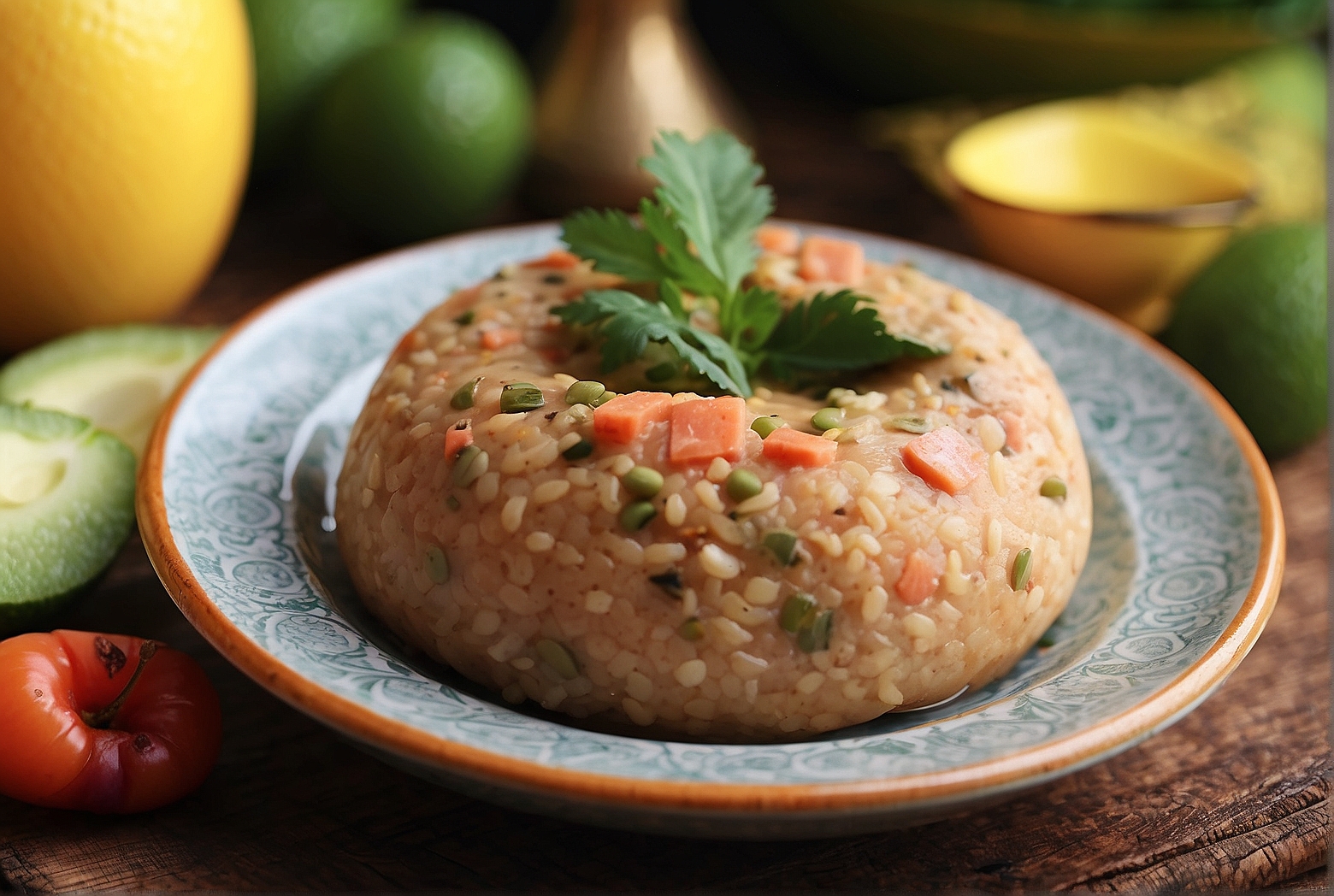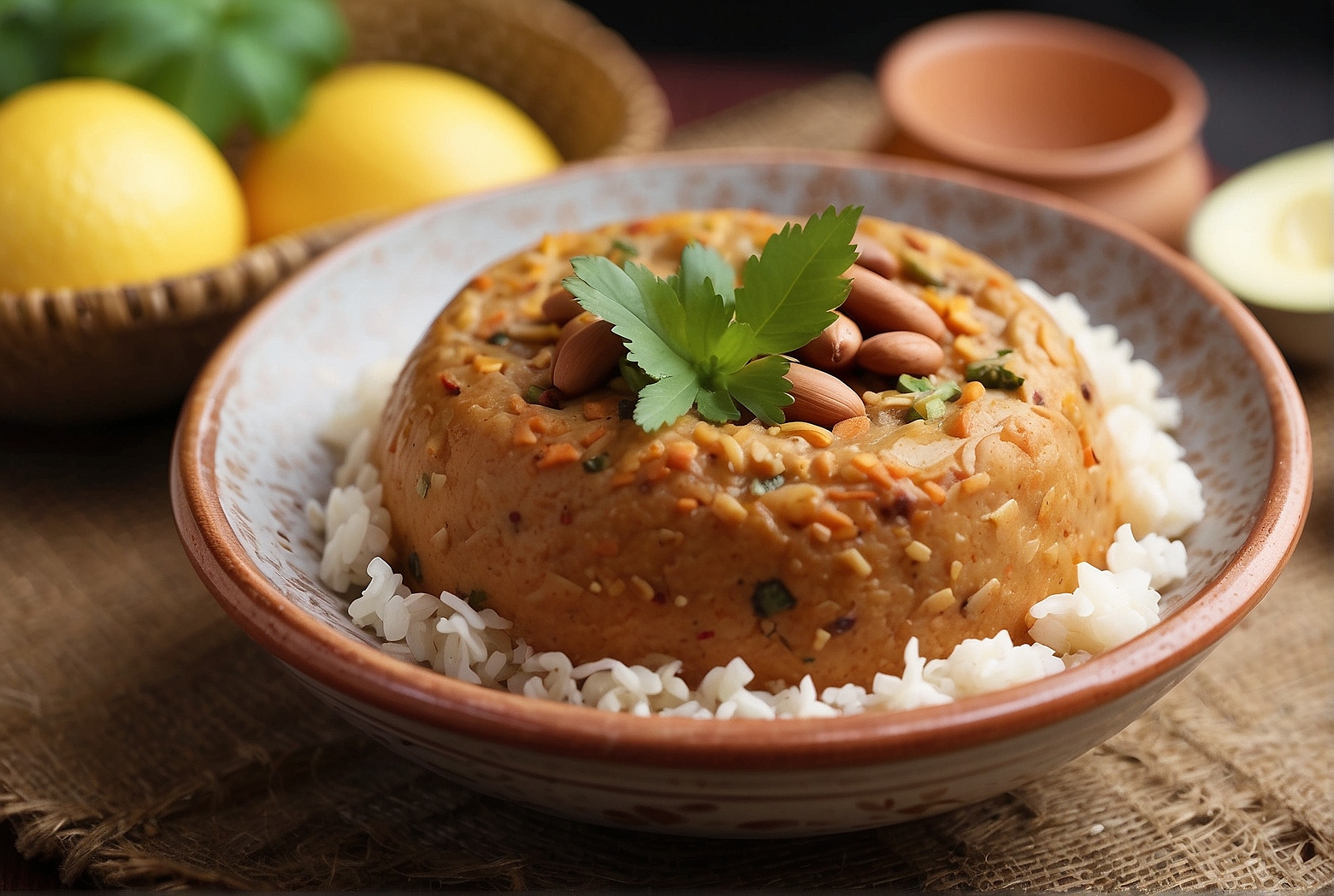Imagine yourself immersing in the vibrant flavors of Brazilian cuisine as we take you on a culinary journey with our traditional Brazilian Acarajé recipe. Bursting with savory goodness, this mouthwatering dish encapsulates the essence of Brazilian culture and gastronomy. From the aromatic spices to the indulgent ingredients, we will guide you through the steps of creating this delectable street food delicacy. So grab your apron and get ready to tantalize your taste buds with the irresistible flavors of Brazil.
Introduction
The Origins of Acarajé
You might have heard of Brazilian cuisine’s rich and diverse flavors, but have you ever tried Acarajé? This beloved street food has its origins deeply rooted in the culture and traditions of Brazil. Acarajé is a popular dish from the northeastern state of Bahia, where it is cherished and enjoyed by locals and tourists alike. Its history can be traced back to the African slaves who were brought to Brazil, particularly from Nigeria and Benin, during the colonial period. These West African influences can still be seen in the preparation and flavors of Acarajé today.
The Importance of Acarajé in Brazilian Cuisine
Acarajé holds a special place in Brazilian cuisine and has become an iconic symbol of Bahia’s culinary heritage. It is not only a delicious and satisfying snack but is also deeply tied to the cultural and religious practices of Afro-Brazilian communities. The art of making Acarajé has been passed down through generations, preserving the tradition and allowing people to connect with their roots. This flavorful street food has made its way from the streets of Salvador to other parts of Brazil and even beyond, captivating the taste buds of all who try it.
Ingredients
The Main Ingredients of Acarajé
To prepare Acarajé from scratch, you will need a handful of essential ingredients. The base of this dish is made from black-eyed peas, which are soaked, ground, and seasoned to create a fragrant and flavorful dough. Other key ingredients include onions, salt, and red palm oil. These ingredients give Acarajé its distinct taste and vibrant color, creating a delightful sensory experience.
The Traditional Toppings for Acarajé
The beauty of Acarajé lies not only in its dough but also in the delectable toppings used to enhance its flavors. The traditional toppings include vatapá, a rich and creamy mixture made from shrimp, ground peanuts, coconut milk, and spices. Additionally, caruru, a flavorful okra and shrimp stew, is often added to complement the overall taste. Finally, the dish is topped off with fresh, tangy salsa composed of diced tomatoes, onions, cilantro, and a squeeze of lime. These toppings add layers of flavor and texture to the already delicious Acarajé.
Preparing the Dough
Soaking the Black-Eyed Peas
The first step in making Acarajé is to soak the black-eyed peas. This process helps soften the peas and makes grinding them easier. Start by rinsing the peas thoroughly and then place them in a bowl with enough water to cover them completely. Let them soak for at least eight hours or overnight to ensure they are ready for the next stage.

Grinding the Soaked Peas
Once the black-eyed peas are adequately soaked, it’s time to grind them into a smooth and pliable dough. Drain the soaked peas and transfer them to a food processor or blender. Blend until the peas form a coarse paste. At this point, you can add finely chopped onions and salt to season the dough, enhancing its taste. Continue blending until the mixture becomes a smooth and consistent dough.
Seasoning the Dough
To infuse the dough with authentic flavors, add a touch of red palm oil during the blending process. This vibrant oil not only adds a distinctive color but also imparts a unique flavor to the dough. Once you have achieved a smooth consistency, taste the dough and adjust the seasoning according to your preference, adding more salt or spices if desired. Let the dough rest for a few minutes to allow the flavors to mingle and develop.
Frying the Acarajé
Heating the Oil
Now that your dough is ready, it’s time to move on to the exciting frying process. Begin by heating a generous quantity of red palm oil in a large frying pan or deep pot. The oil should be hot enough to create a sizzle when the dough is dropped into it. Test the oil’s temperature by dropping a small piece of dough into it – if it instantly sizzles and rises to the surface, the oil is ready for frying.
Making Small Dough Balls
Using a spoon or your hands, scoop a small portion of the dough and shape it into a ball. Traditionally, Acarajé is smaller in size, allowing for a perfect one or two-bite snack. As you shape each ball, gently press your thumb in the center, creating a hollow pocket to hold the delicious fillings later on. Repeat this process until all the dough is formed into balls, ready to be fried to golden perfection.
Frying the Balls until Golden Brown
Carefully place the dough balls into the hot oil, ensuring they have enough space to cook evenly. Frying time may vary, but typically, it takes around 3 to 4 minutes for the Acarajé to become golden brown and crispy. Using a slotted spoon or tongs, flip the balls as needed, ensuring an even and crisp texture on all sides. Once they achieve the desired color and texture, remove the Acarajé from the oil and allow them to drain on a paper towel-lined plate, soaking up any excess oil.
Preparing the Filling
Traditional Filling Options for Acarajé
Acarajé is not complete without its mouthwatering fillings. Traditional options include vatapá, a rich mixture made from shrimp, ground peanuts, coconut milk, and spices. The combination of aromatic spices and the creaminess of peanuts and coconut milk creates a luscious, savory filling. Additionally, caruru, a stew made from okra, dried shrimp, palm oil, and spices, adds another layer of flavor to the Acarajé. These fillings perfectly complement the crunchy exterior of the fried dough, creating a harmonious balance of textures and tastes.

Preparing the Filling
To prepare the filling, start by cooking the peeled and deveined shrimp in a pan with some red palm oil until they turn pink and are cooked through. Set the cooked shrimp aside. In the same pan, sauté finely chopped onions and garlic until they become translucent. Add ground peanuts and stir well until they release their oils and turn lightly golden. Next, add coconut milk, a mixture of spices such as ground ginger, ground cloves, and paprika, and whisk everything together. Allow the mixture to simmer until it thickens, creating a velvety consistency. You can then add the cooked shrimp to the mixture, combining all the flavors. For the caruru filling, follow a similar process, sautéing the okra and dried shrimp with palm oil and spices to achieve a delectable stew-like texture.
Assembling the Acarajé
Slicing the Acarajé
With the Acarajé balls fried to a perfect golden brown, it is time to start assembling this culinary masterpiece. Begin by carefully slicing each Acarajé ball in half horizontally, creating a opening reminiscent of a hamburger bun. Be gentle when slicing to preserve the intact hollow center, which will hold the fillings and toppings.
Removing Excess Oil
As you slice the Acarajé and prepare them for serving, it’s important to remove any excess oil that may have accumulated during frying. Gently pat each side of the fried dough with a paper towel, absorbing any residual oil. This step ensures a lighter and less greasy eating experience without compromising the dish’s overall deliciousness.
Adding the Filling and Toppings
Now comes the exciting part – filling the Acarajé with the scrumptious fillings and vibrant toppings. Take a spoonful of the vatapá mixture and generously spread it inside the hollowed center of each sliced Acarajé ball. Top it off with a spoonful of caruru, completing the flavor profile with its unique combination of okra and dried shrimp. To add a burst of freshness and acidity, sprinkle a spoonful of the tomato, onion, and cilantro salsa over the filling. These layers of flavor and texture come together beautifully to create a memorable culinary experience.
Serving and Enjoying
Serving Suggestions
Acarajé is traditionally served as a street food snack, perfect for eating on the go. However, you can also enjoy it as a delightful appetizer or a main course. To enhance the experience, serve the Acarajé with a side of farofa (toasted cassava flour), which adds a crunchy texture and complements the flavors. Fresh lime wedges are also a great addition, adding a tangy brightness that cuts through the richness of the fillings. Pair your Acarajé with a refreshing caipirinha, Brazil’s national cocktail, for a complete and authentically Brazilian culinary adventure.
Enjoying the Acarajé
Once everything is assembled, take a moment to admire your beautifully prepared Acarajé before taking your first bite. As you sink your teeth into the crunchy exterior, you’ll be met with a burst of flavors from the creamy filling and zesty toppings. The contrasting textures and aromatic spices will dance on your palate, creating an unforgettable taste experience. Allow yourself to savor each bite, appreciating the cultural heritage and history that goes into every mouthful of this beloved Brazilian dish.
Variations and Adaptations
Vegetarian or Vegan Options
For those following a vegetarian or vegan diet, Acarajé can easily be adapted to accommodate your dietary preferences. Instead of using shrimp in the fillings, you can replace it with plant-based alternatives such as diced tofu or tempeh for added texture and protein. Additionally, using vegetable broth instead of shrimp stock in the vatapá and caruru fillings will create a flavorful and meat-free option. Adjust the seasoning and spices accordingly to ensure a balanced taste that still captures the essence of traditional Acarajé.
Gluten-Free Adaptations
If you have a gluten intolerance or allergy, you can still enjoy the flavors of Acarajé by making a few simple adaptations. Instead of using regular wheat flour, opt for gluten-free alternatives such as cassava flour or tapioca starch. These gluten-free flours will give your dough a similar texture and taste, allowing you to savor the essence of Acarajé without the worry of gluten-related discomfort.
History and Cultural Significance
The African Influence in Brazilian Cuisine
Brazilian cuisine has been heavily influenced by the African culinary traditions brought over by enslaved Africans during the transatlantic slave trade. Acarajé is a prime example of this cultural fusion, blending West African ingredients and techniques with indigenous Brazilian flavors. The use of black-eyed peas, red palm oil, and aromatic spices found in Acarajé reflects the shared culinary heritage between West Africa and Brazil. It serves as a delicious testament to the cultural exchange that occurred over centuries, shaping the vibrant food culture we see today in Brazil.
The Role of Acarajé in Religious Practices
Beyond its delectable taste, Acarajé holds a deeper cultural significance as an essential part of Afro-Brazilian religious practices. In Bahia, Acarajé plays a central role in Candomblé, an Afro-Brazilian religion that fuses African and Catholic traditions. Acarajé is often offered as a sacred food to deities, symbolizing the connection between food, spirituality, and community. The women who prepare and sell Acarajé in Bahia, known as baianas, are highly respected figures within the religious community. They are considered the guardians of tradition and culture, ensuring that Acarajé continues to nourish both the body and the soul.
Conclusion
Summary of the Acarajé Recipe
In summary, Acarajé is a beloved street food hailing from the northeastern state of Bahia in Brazil. Its origins can be traced back to West African culinary traditions, brought over by enslaved Africans. This crispy and flavorful dish is made from black-eyed peas, which are soaked, ground, and seasoned to create a delightful dough. Acarajé is fried until golden brown and stuffed with delicious fillings such as vatapá and caruru, topped with a fresh tomato salsa. Its cultural importance is undeniable, representing the fusion of cultures and religions in Brazil.
The Cultural Importance of Acarajé
Acarajé not only pleases the palate but also embodies the history, traditions, and religious practices of Bahia. It is a powerful reminder of the African influences that have shaped Brazilian cuisine and culture. From the labor-intensive preparation to the vibrant flavors and communal enjoyment, Acarajé encapsulates the spirit of Brazilian culinary traditions. So, the next time you have the opportunity to try Acarajé, take a bite and savor the culinary masterpiece while appreciating the cultural and historical significance that has made it an indispensable part of Brazilian cuisine.
